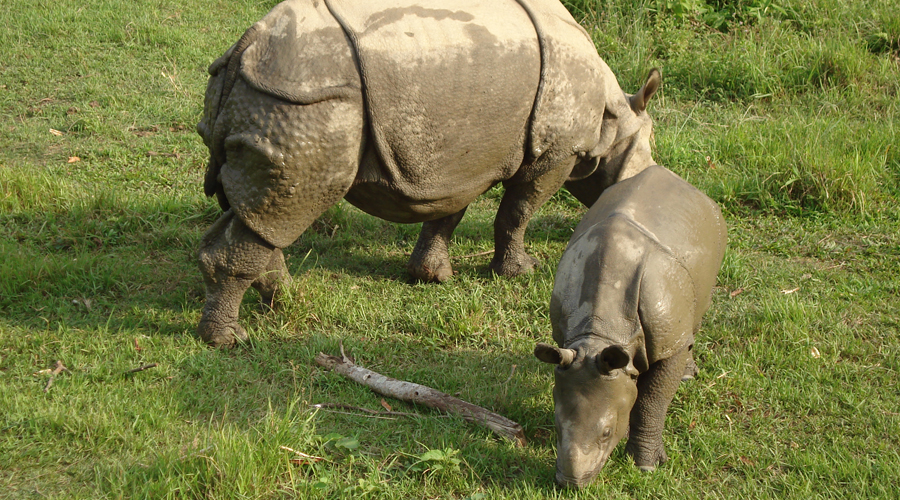Bardia National Park
Bardia National Park

Bardia National Park is latest and largest recognized and least explored by adventurous travelers is located in mid- western lowland with an area of 968 sq. km. In 1967, part of the area was established as Royal Hunting Reserve. Later in 1976, the area was gazetted as Royal Karnali Wildlife Reserve to include an area of 386 sq km and renamed as the Royal Bardia Wildlife Reserve in 1982. Before the establishment of hunting reserve the villages located in Baghaura Phanta and Lamkoili Phanta were relocated outside the reserve boundary. In 1984, the area was extended in the east to include the Babai Valley to encompass a total area of 968 sq. km. In 1988, the whole area was declared as Bardia National Park. Recently the proposed extension of the park in the east in Banke district has been dedicated as a "Gift to the Earth" and declaration is in process.
The park is bordered with Ratna Highway (Nepalganj-Surkhet road) in the east. Geruwa River, eastern branch of Karnali river system forms the western boundary of the park. The crest of the Churia range forms the northern boundary of the park and the southern boundary adjoins cultivated lands, settlements, buffer zone forest and part of the East-West Highway. The park is reputed for its rich biodiversity. The vegetation in the park ranges from early succession stage, tall floodplains grassland, established on the alluvial floodplain of Karnali, Orai and Babai river systems to the climax stage, sal (Shorea robusta) forest, extended on relatively dry flat lands and slopes of the park are regenerate and are dominated by grass species.
The faunal diversity of the park includes 53 species of mammals including endangered like Royal Bengal tiger,rhinoceros and elephant 25 species of reptiles, over 400 species of birds and 121 species of fishes. The park provides an excellent wilderness experience for visitors. Unique flora, fauna and landscape of the park and indigenous culture of buffer zone communities are important attraction for the tourists. In recent years the number of tourists visiting the park has increased remarkably.
A narrow strip of buffer zone covering an area of about 327 sq. km adjoins the park in the west and in the south. More then 100,000 people of diverse ethnicity inhabit the buffer zone. Tharus are the indigenous group and comprises above 60% of the total population. Other ethnic groups in the buffer zone include Brahmin/Kshetri, occupational castes and the people from Mongoloid origin (Magar, Gurung, Tamang etc). Agriculture is the main occupation of buffer zone communities. 12-14 hrs. Bus ride from ktm or 90 minutes flight from ktm to Nepalgunj and 85 km drive by jeep or van to Bardia National Park. This is the only National park with a large territory of Royal Bengal Tigers and a huge river, the home of the fresh water Dolphin, of course its flora and fauna are worth exploring.Now there are modern amenities resort and lodges are operated for the nature lovers individual or group visiting packages.